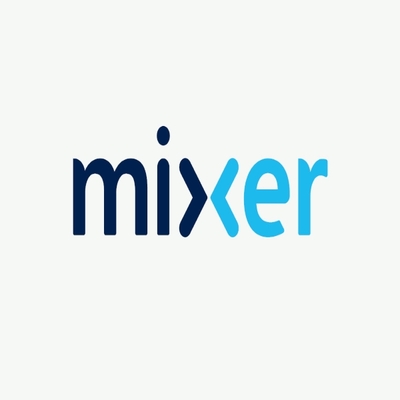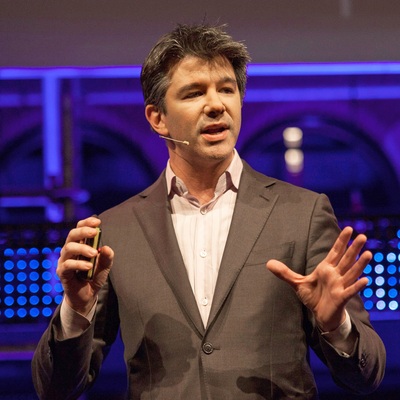What was Mixer?
Mixer was a free video game live streaming platform. It allowed users to host and broadcast live streams, as well as chat with their viewers. It was primarily focused towards video gaming content.
Mixer (then known as ‘Beam’) was launched on January 5th 2016. It was founded by Matthew Salsamendi and James Boehm, who were 16 and 18 at that time. But their business’s origin traces its roots all the way back to 2011.
In 2011, when Matt was 13 years old, he started hosting servers for gamers and friends as a hobby. People could host their own personalized version of the game with controls and modifications of their liking. He would charge a price for this utility.
Word of Matt’s service spread through the gamer community. James, then 15, came across one of Matt’s advertisements for his hosting service. James and Matt became quick friends. James soon realized that Matt’s business had real potential and convinced him to join forces.
With James’ homegrown business development skills, and Matt’s pre-existing setup, they made the business official. Over time, the demand for their business kept mushrooming, and outgrew Matt’s home setup.
There was not enough space for the PCs, and their setup could not handle the demand for power, speed, and networking capacity. So, they decided to move the domestic lab to a data centre, a more commercial space.
From 2011 to 2014, James and Matt’s bootstrapped business grew to a company valued at $5 Million. They then decided to pivot and recentre their enterprise around an activity that was gaining popularity – streaming.
They developed an FTL (Faster than light) streaming protocol and launched an alpha version of their website. People could stream games, get low latency broadcasts, discover new chatrooms and streamers. Their goal was to improve and increase viewer participation.
They started out small, but over time their userbase was on an ascent. When their monthly viewership hit 20,000 people, they were sure of the goldmine they had in their hands. They officially launched Beam in January 2016.
Beam allowed streamers to crowdsource the control of their game. Viewers could engage with the host in real time. It had interactive features that could control the host player’s environment (in the game). They could warn the host about possible attacks, change their weapon, etc.
This could all be done with no delay. Viewers could influence streams with very little latency, compared to its competitors, which could have up to a 10-20 second delay. This set it apart from anything out there at that time.

In May 2016, Beam began turning heads by raising $50000 in equity-free funding. It secured this money by winning the ‘Startup Battlefield’ competition at the TechCrunch conference. It was also able to secure $420000 in seed funding.
As Beam started gaining traction, it came under Microsoft’s radar. Microsoft was probably looking to expand past the Xbox into the gaming industry. Hence, they acquired Beam for an undisclosed amount in August 2016. James and Matt decided to stay on as employees of the company.
Acquisition: Microsoft Mixer
After Microsoft’s acquisition, Beam’s service and personnel were integrated into the Xbox division. Special Beam apps were integrated into the Xbox and Windows 10 dashboard.
In 2017, Beam was relaunched as ‘Mixer’, as the previous name could not be used globally. The rebranding also came with a slew of new features. Notably, it introduced a co-streaming feature, where up to 4 people could stream their games on a single screen on a channel.
But, unfortunately, over the next year and a half, Mixer failed to make big strides in the gaming space. According to a streamelements report, 2018 ended with Amazon-owned Twitch reigning in the top spot (9.36 billion watch time hours) for streaming. It was followed by YouTube gaming (2.31 billion watch time hours). Microsoft mixer was at the third position with 168 million hours of watch time, barely 2% of Twitch’s market share.
The start of 2019 also did not look very good for Mixer. There was a new entrant in the market - Facebook Gaming, who bumped Mixer to the 4th position by Q2 of that year.
Mixer’s rushed growth strategy
In a forlorn attempt to increase viewership, Microsoft decided to recenter its business strategy. On July 31st 2019, popular videogame streamer Tyler ‘Ninja’ Belvins announced that he would be exclusively streaming from Mixer.
This move was considered to be a huge win for Mixer, as Ninja was one of Twitch’s top creators. Ninja had 14 million viewers on Twitch with his rise in popularity synonymous with the rise of the game Fortnite. Ninja’s jump to Mixer was surprising to the community, to say the least.
Microsoft saw the result of this manoeuvre bear fruit almost immediately. By Q3 2019, total number of streamed hours increased by 188%, due to the audience Ninja bought with him. However, Mixer’s watch time and percentage of concurrent viewers decreased by 10%.
Microsoft continued with this strategy and continued recruiting streamers with exclusivity contracts. However, by October 2019, both founders Boehm and Salsamendi announced their departure from the company.
So, what happened to Mixer?
Eight months later in June 2020, after the founders’ exodus, Microsoft announced that mixer would be closing shop. It released a statement notifiying its partners and streamers that despite the Mixer shut down, they would be transitioned to Facebook Gaming.
Its decision to cease operations and collaborate with Facebook was cited to a poor market share and tough competition. All Mixer partners and relevant mixer links were redirected and integrated into the Facebook gaming ecosystem.
So, when did Mixer shut down?
Mixer’s staff and intellectual property were transferred to the Microsoft Teams division and interspersed with the product. Officially, Microsoft Mixer shut down on 22nd July 2020.
Why did Mixer shut down?
To industry experts and onlookers, the Mixer shut down was not very surprising. Let us explore why:
-
Powerful Competition and Timing of Entry
No matter how you look at it, Microsoft just failed to make a big enough splash. It entered the market a little too late. During the time of its entry, Twitch was reigning supreme. Twitch had the first-mover advantage and had grown its audience organically.
Its other competitors, YouTube Gaming and Facebook Gaming were late entrants, just like Mixer. But they did not have the handicap that Mixer did: which was starting from scratch. Both Facebook and YouTube already had a wide user base waiting for them.
-
Lack of Community
One of the reasons Twitch, Mixer’s biggest competitor could hold its ground against the Goliaths Facebook and YouTube, was because of its vibrant and passionate community. When Microsoft’s Mixer entered the market, they could never quite figure out how to replicate this phenomenon.
Twitch promoted organic talent and focused on projecting a single faceted idea behind its image: Twitch is for streaming. It spent quite a few years organically building a community and cultivating a loyal userbase for its platform.
The most notable misstep Microsoft took in its replication pursuit was the expensive influencer contracts. With the Ninja deal, it was evident that they had ditched their organic efforts for a faster solution by buying viewers. While this did help in the short run, they failed to realize that ‘Ninja’ was what allured the viewers, not the platform.
-
Low Employee Retention Rate and Low Morale
Microsoft had a low employee retention rate with its turnovers. The most notable being the exit of their founders in 2019. Research indicates that having the founder stick around and stay on board usually improves the success of the business.
Microsoft employed their own people for managing the business. This led to culture clashes between Beam’s existing employees and the new hires. There were also instances of unchecked racism which further lowered employee morale.
A safe working environment and a healthy work culture have a huge impact on employee happiness and productivity. This trickles down and affects the business’s success.
-
Expenses
Operating and maintaining a live-streaming service is an expensive endeavour. Amazon-owned Twitch can support this with their set-up of AWS. Microsoft-owned Mixer could also support this with its Azure ownership.
However, in both cases, these undertakings are not cheap. This investment made sense for Amazon, with Twitch’s billion watch hours. This investment stopped making sense for Microsoft, as Mixer just seemed like a money pit with each passing year.
On top of that, Microsoft also went on to sign expensive contracts with well-known streamers which did not make much of a dent in their viewership.
After a point, this loss-making enterprise did not seem worth the hassle. By shutting down Mixer, Microsoft was also demonstrating to its shareholders – it intends to protect its market capitalization.
-
Strategic Shift for Microsoft’s overall business strategy
Microsoft decided to remove its existing resource from Mixer’s sinking ship and divert them towards moneymaking avenues. Over the past couple of years, Microsoft seems to be leveraging its platform for more lucrative partnerships.
This could explain its deal with Facebook Gaming on its closure. It was also focusing its resources on its cloud-gaming platform the xcloud Project. Additionally, in 2019, Microsoft also entered into a collaboration with its rival, Sony for developing innovations in the gaming experience.
With its new affiliations and collaborations, Microsoft seemed to be harnessing and doubling down on revenue-making opportunities as part of its revamped business strategy.
Microsoft by no means was an underdog in the gaming industry, but it was certainly on a losing streak in the streaming one. Mixer at its core was far from a bad product. However, Mixer’s failure was just a result of unlucky factors and a couple of bad decisions.





.png)




 Entrepreneurship
Entrepreneurship